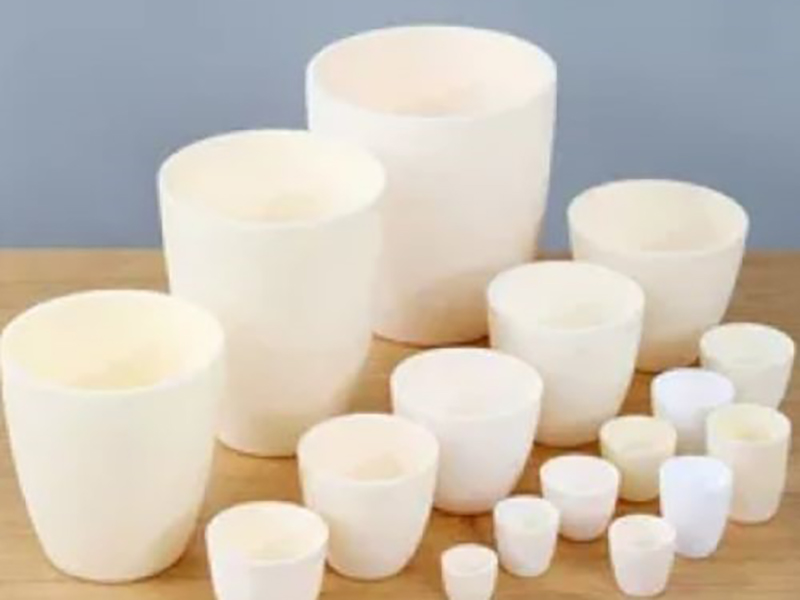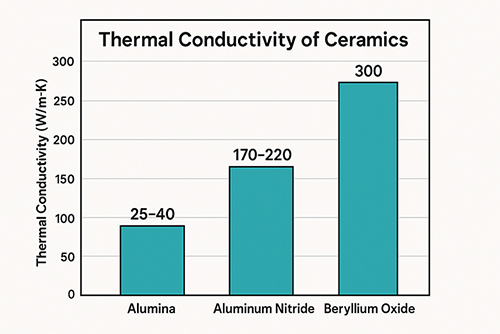Several Production Methods of Alumina and Their Advantages

Introduction
Alumina, also known as aluminum oxide, is a crucial material used in a wide range of industries, including aerospace, electronics, medical, and automotive. It is a white, crystalline powder that possesses excellent physical and chemical properties, such as high melting point, high hardness, and resistance to corrosion.
There are several production methods of alumina, each with its advantages and disadvantages. In this article, we will discuss the four most common alumina production methods and explore their benefits. Hope that you can have a better understanding of how alumina is produced.
Bayer Process
Bayer process is the most widely used method of producing alumina. As shown in Figure 1 [1], it involves the following steps:
- Crushing: Bauxite ore is first crushed and mixed with sodium hydroxide to form a slurry.
- Heating: The slurry is then heated under pressure to dissolve alumina content, leaving behind impurities.
- Precipitation: The alumina is then precipitated out of the solution and calcined to remove any remaining moisture.
Figure 2. Production of alumina by Bayer process
The Bayer process is advantageous because it produces high-purity alumina and can use a range of bauxite ores with different chemical compositions. Additionally, the process is relatively simple and does not require high temperatures or pressures.
Sintering
Sintering is a process of compacting and forming a solid mass of material using heat or pressure without melting it. In the preparation of alumina, sintering involves:
- Mixing: Mixing alumina powder with additives such as binders and lubricants.
- Pressing: The mixture is then pressed into a mold and heated in a furnace.
- Heating: The heat causes the powder to fuse together, forming a solid mass.
The advantage of sintering is that it allows for the production of complex shapes and can be used to create porous or dense materials.
Hydrothermal Synthesis
Hydrothermal synthesis is a method of making alumina by reacting aluminum hydroxide (Al(OH)3) with water at high temperatures and pressures. Here is the manufacturing process.
- Mixing: Mix aluminum hydroxide with water in a sealed container to create a slurry. The water acts as a solvent and is necessary for the hydrothermal reaction to occur.
- Heating: The mixture is then heated to high temperatures and pressures, causing the reaction to start. The chemical equation for this reaction is 2Al(OH)3 → Al2O3 + 3H2O.
Hydrothermal synthesis is beneficial since it can produce high-purity, nano-sized alumina particles with specific shapes and sizes.
Sol-gel Process
The Sol-Gel process involves converting a liquid solution into a solid gel, which is then calcined to form alumina. The process involves:
- Mixing: Mixing aluminum alkoxide with a solvent to form a sol.
- Bonding: The sol is then aged to allow the particles to bond together, forming a gel.
- Calcination: The gel is then calcined at high temperatures to form alumina.
The Sol-Gel process offers several benefits because it can produce high-purity, homogeneous alumina with specific properties, such as a high surface area and pore size.
You can check the table below to learn more about these four alumina manufacturing methods and their features and benefits.
Table 1 Comparison between Several Production Methods of Alumina
|
|
Key Features |
Advantages |
|
Bayer Process |
The most widely used methods; |
Employing a range of bauxite ores with different chemical compositions; The process is relatively simple; |
|
Sintering |
Using heat or pressure without melting it; |
The production of complex shapes; Be used to create porous or dense materials;
|
|
Hydrothermal Synthesis |
Reacting aluminum hydroxide with water at high temperatures and pressures; |
It can produce high-purity, nano-sized alumina particles with specific shapes and sizes;
|
|
Sol-gel Process |
It can produce high-purity, homogeneous alumina with a high surface area, pore size, etc; |
Related reading: Everything You Need to Know about Alumina Ceramics
Conclusion
In a word, alumina is an essential material in various industries, and the production methods discussed in this article all have their advantages. The Bayer process is the most widely used method, while sintering, hydrothermal synthesis, and Sol-gel processes offer unique advantages such as the ability to produce complex shapes, nano-sized particles, and homogeneous materials. The choice of production method depends on the specific application and desired properties of the alumina.
Advanced Ceramic Materials (ACM) is a trustful supplier of a variety of ceramic materials. We offer quality alumina and other advanced ceramics at reasonable prices. Customization is also welcome. Send us an inquiry if you are interested.
Reference:
[1] Wahyudi, Agus & Kurniawan, Winarto & Husaini, Husaini & Azhari, & Azis, Muchtar & Hinode, Hirofumi. (2015). Potential Application of Red Mud (Bauxite Residue) in Indonesia.
{{item.content}}
LEVE A REPLY
{{item.children[0].content}}
{{item.content}}
LEAVE A REPLY
SUBSCRIBE OUR NEWSLETTER
- Boron Nitride in Cosmetics: Enhancing Performance and Sensory Appeal
- Maximize MOCVD Yield and Purity with Hexagonal Boron Nitride Setters
- What Are the Advantages and Uses of Boron Nitride Ceramic Sheet?
- The Compression Annealing Advantage for Pyrolytic Boron Nitride
- Beyond Insulation: The Surprising Spectrum of Ceramic Thermal Conductivity











